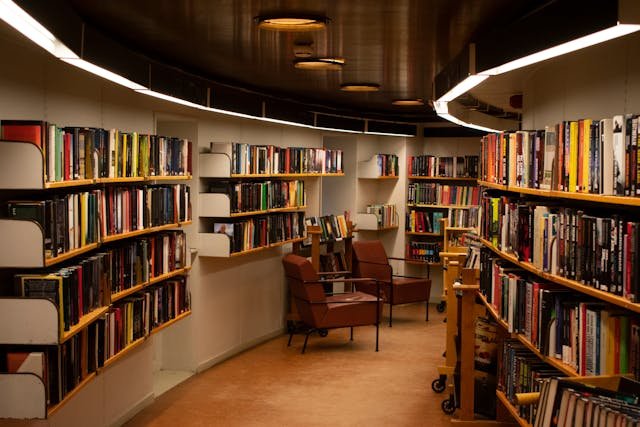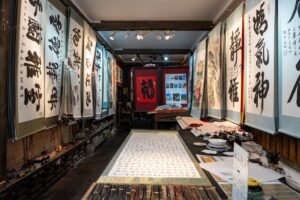Chinese literature, with its rich history spanning over thousands of years, offers a fascinating range of storytelling methods that reflect the evolution of Chinese culture and society. From the classical tales of ancient dynasties to the complex, multi-layered narratives of contemporary fiction, Chinese novels use a variety of narrative techniques that both captivate and challenge readers. Understanding these techniques can greatly enhance one’s appreciation of the intricate storytelling found in Chinese literature. In this article, we will explore some of the most important narrative techniques used in Chinese novels and provide tips on how to analyze and appreciate them effectively.
Table of Contents
Toggle1. Understanding Chinese Narrative Tradition
Before delving into specific techniques, it is essential to understand the broader context of Chinese narrative tradition. Unlike Western literary traditions, which often focus on individual character development and linear plot progression, Chinese literature has historically placed a strong emphasis on the collective experience, philosophical ideas, and the interaction between humans and nature. These elements shape how stories are told and understood.
One key aspect of Chinese narrative tradition is the interplay between narrative and philosophy. Many classical Chinese novels, such as Journey to the West (《西游记》 Xī Yóu Jì) by 吴承恩 (Wú Chéng’ēn), are imbued with teachings from Confucianism, Daoism, and Buddhism. The journeys and struggles of the characters often mirror philosophical quests for enlightenment and harmony with the universe. Appreciating these deeper layers requires a basic understanding of the cultural context in which the stories were written.
To truly engage with these novels and appreciate their depth, it’s valuable to immerse oneself in the Chinese language and culture. At LC Chinese School in Oslo, our Chinese classes are designed to help you connect with these literary masterpieces on a deeper level. Sign up today at https://lcchineseschool.com/no/flexible-classes-2/.
2. Nonlinear Storytelling: A Distinctive Feature of Chinese Novels
One of the most striking features of Chinese novels, especially classical works, is their nonlinear storytelling. Unlike many Western narratives that follow a strict chronological order, Chinese novels often use a cyclical or fragmented narrative structure. This technique allows the author to interweave past and present, providing a broader perspective on the story’s themes and characters.
For example, in Dream of the Red Chamber (《红楼梦》 Hóng Lóu Mèng) by 曹雪芹 (Cáo Xuěqín), the story shifts between the present life of the Jia family and reflections on their past glories and declines. This technique serves to underscore the theme of impermanence and the transient nature of wealth and status. The narrative becomes a tapestry where different time periods overlap, offering readers a richer and more complex view of the characters’ lives.
To analyze nonlinear storytelling in Chinese novels, it is helpful to trace the key events and understand their significance in the broader narrative. Take note of how flashbacks or shifts in time reveal character motivations or deepen the thematic exploration of the story. This technique often requires patience from the reader but rewards them with a more profound understanding of the narrative’s layers.
3. Multiple Perspectives: A Polyphonic Approach
Another narrative technique frequently used in Chinese literature is the use of multiple perspectives or a polyphonic approach. This method allows the author to present different viewpoints on a single event or theme, creating a richer and more nuanced narrative.
In modern Chinese literature, writers like 鲁迅 (Lǔ Xùn) and 莫言 (Mò Yán) have employed this technique to great effect. 鲁迅’s Call to Arms (《呐喊》 Nàhǎn) uses various narrators to express the collective frustrations and struggles of early 20th-century China. Each perspective provides a unique lens through which to view the societal changes and tensions of the time.
莫言’s Red Sorghum (《红高粱》 Hóng Gāoliáng) also utilizes a polyphonic narrative structure, blending the perspectives of different generations within a single family. This approach allows readers to see the impact of historical events, such as the Japanese occupation, through the eyes of multiple characters. The result is a story that feels both personal and epic, rooted in the experiences of individuals yet resonating with broader historical significance.
To appreciate this technique, try to identify the different narrative voices and consider how each one contributes to the story’s overall meaning. How do these voices interact with each other? What do they reveal about the characters’ inner lives or the social context of the story? This approach helps to uncover the deeper layers of meaning in the narrative and enhances the reading experience.
4. Symbolism and Metaphor: Deepening the Narrative
Chinese novels often rely heavily on symbolism and metaphor to convey deeper meanings, offering readers a way to explore the themes and emotions that may not be explicitly stated in the text. Symbolism in Chinese literature is deeply rooted in cultural traditions and often draws from nature, folklore, and philosophy.
In Journey to the West (《西游记》 Xī Yóu Jì), for example, the journey itself is not just a physical adventure but a symbolic quest for spiritual enlightenment. The character of Sun Wukong (孙悟空 Sūn Wùkōng), the Monkey King, represents both the rebellious spirit and the struggle for self-discipline, making his journey a metaphor for the challenges of spiritual growth. Each encounter with demons and divine beings symbolizes the internal struggles that humans face on their path to enlightenment.
In To Live (《活着》 Huózhe) by 余华 (Yú Huá), the ox that accompanies the protagonist Fugui in his later years symbolizes the endurance and resilience of ordinary people in the face of life’s suffering. This use of symbolism allows the novel to resonate on a universal level, even as it tells a deeply personal story.
When analyzing symbolism in Chinese novels, it is crucial to consider the cultural context. What does a particular symbol mean within Chinese culture? How does it relate to the themes of the novel? Understanding the symbolism can add a new dimension to your reading and deepen your appreciation of the text.
5. Stream of Consciousness: Exploring the Inner Worlds
The stream of consciousness technique, which explores the inner thoughts and feelings of characters in a flowing, often disjointed manner, is another powerful narrative tool used by modern Chinese writers. This method allows for a deep exploration of a character’s psychological state, offering readers direct access to their inner world.
In The Song of Everlasting Sorrow (《长恨歌》 Cháng Hèn Gē) by 王安忆 (Wáng Ānyì), stream of consciousness is used to portray the inner turmoil and shifting thoughts of the protagonist, Wang Qiyao, as she navigates the changes in Shanghai over several decades. This technique gives readers an intimate understanding of her emotional landscape, as the narrative meanders through her memories, regrets, and desires.
To analyze this technique, it’s helpful to pay attention to how the flow of thoughts is structured. How do the shifts in consciousness reflect the character’s emotional state? What do these inner thoughts reveal that might not be expressed outwardly? This approach allows for a more nuanced understanding of character development and thematic depth.
6. Fragmented Narratives: Capturing the Complexity of Life
Many contemporary Chinese novels use fragmented narratives, where the story is presented in a series of disjointed scenes or vignettes. This technique is particularly effective for capturing the complexity and chaos of modern life, as it mirrors the fragmented nature of memory and experience.
余华 (Yú Huá)’s Brothers (《兄弟》 Xiōngdì) employs a fragmented narrative to weave together the stories of two brothers across different time periods. The disjointed structure reflects the disruptive changes in Chinese society, from the Cultural Revolution to the era of economic reform. This technique creates a mosaic-like narrative, where each fragment contributes to a larger, more complex picture of the characters’ lives and the social upheaval they endure.
To appreciate fragmented narratives, try to focus on how each segment relates to the whole. What themes or motifs recur across different fragments? How does the structure affect your perception of time and memory within the story? This analysis can reveal the underlying connections between seemingly disparate parts of the narrative.
7. Conclusion: Appreciating the Art of Chinese Storytelling
Analyzing narrative techniques in Chinese novels is not just about understanding the mechanics of storytelling; it is about engaging with the rich cultural and philosophical layers that make these stories so enduring. From nonlinear storytelling to the use of symbolism and multiple perspectives, each technique serves to enrich the narrative, offering readers a deeper connection to the characters, themes, and history that shape the story.
By taking the time to explore these techniques, readers can unlock the full potential of Chinese literature and appreciate its contribution to the global literary canon. Whether you are new to Chinese literature or looking to deepen your understanding, studying the narrative techniques used in these works is a rewarding journey.
At LC Chinese School in Oslo, we offer Chinese classes that not only teach the language but also provide cultural insights that are essential for appreciating these literary treasures. Our flexible learning options allow you to study at your own pace, either online or in-person, with expert guidance. Don’t miss this chance to explore the world of Chinese literature in depth—register today at https://lcchineseschool.com/no/flexible-classes-2/.
Immerse yourself in the stories that have shaped Chinese culture and discover the artistry behind their creation. Whether you’re interested in classic works like Journey to the West (《西游记》) or modern narratives that capture the complexities of contemporary China, understanding these storytelling techniques will open up new avenues of appreciation and enjoyment. Happy reading and happy learning!








